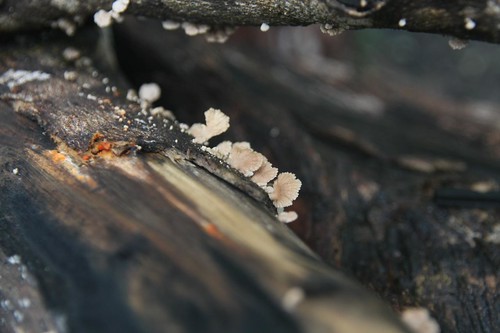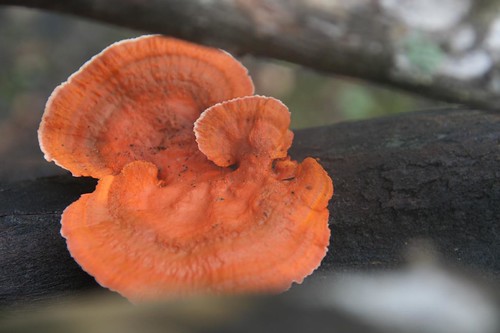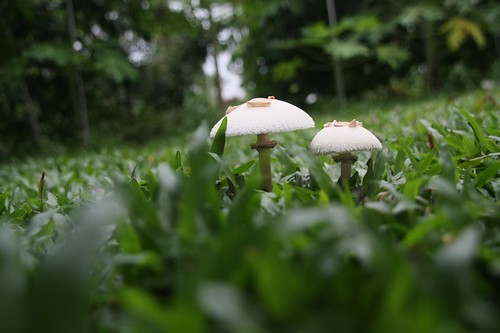First, Split Gill fungus (Schizophyllum Commune), which is a fan-shaped fungus that thrives in decaying wood. It is said to cause diseases in humans. Published in several papers, this fungus has been stated to cause lung disorders.
According to Tom Volk,
"the fungus had grown through the soft palate of a child's mouth and was actually forming fruiting bodies (mushrooms) in her sinuses!!!"Links on Split Gills:
Wikipedia on Schizophyllum commune
Mykoweb on Schizophyllum commune
mushroomexpert.com
allaboutmushrooms.com
Tom Volk's Fungus for the Month February 2000
Split Gills growing on a decaying log

Pycnoporus sanguineus fungus is poisonous and is a plant pathogen. It is also called Red Fungus because of its reddish fan-like plates. In Sarawak, they call it Kulat Bungkang. Both the Split Gills and Red Fungus are bracket fungi. While several websites describe the fungus as poisonous, bitterrootrestoration.com described its medicinal values.
Links on Red Fungus:
danielwinkler.com
mushroomobserver.com
malaysianfungi.blogspot.com
wikipedia.org
Red Fungus in our garden

Links on the false parasol mushroom:
wikipedia.org
mushroomexpert.com
chestofbooks.com
The false parasol mushroom in our garden

No comments:
Post a Comment